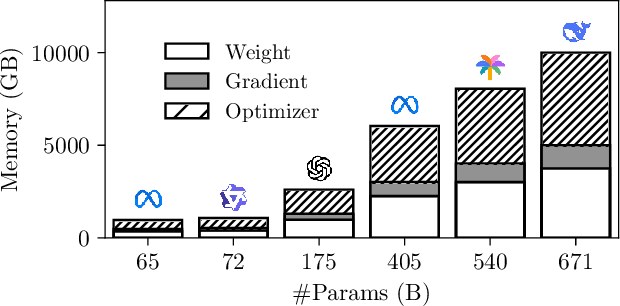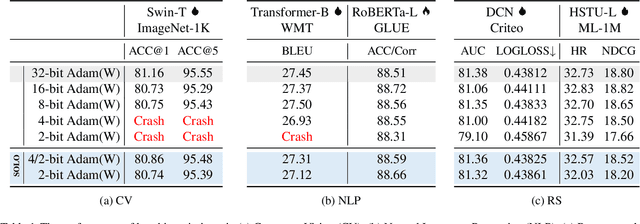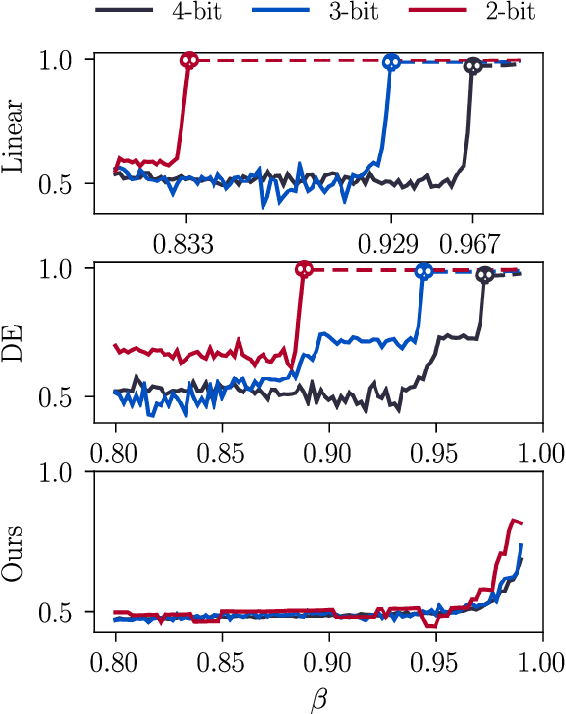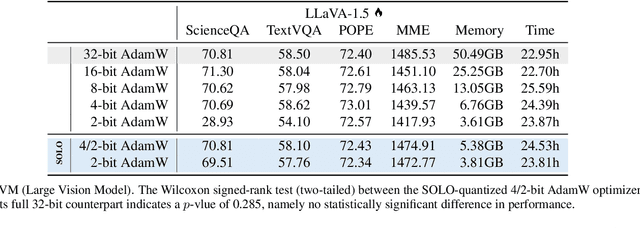Lizhuang Ma
IAR2: Improving Autoregressive Visual Generation with Semantic-Detail Associated Token Prediction
Oct 08, 2025Abstract:Autoregressive models have emerged as a powerful paradigm for visual content creation, but often overlook the intrinsic structural properties of visual data. Our prior work, IAR, initiated a direction to address this by reorganizing the visual codebook based on embedding similarity, thereby improving generation robustness. However, it is constrained by the rigidity of pre-trained codebooks and the inaccuracies of hard, uniform clustering. To overcome these limitations, we propose IAR2, an advanced autoregressive framework that enables a hierarchical semantic-detail synthesis process. At the core of IAR2 is a novel Semantic-Detail Associated Dual Codebook, which decouples image representations into a semantic codebook for global semantic information and a detail codebook for fine-grained refinements. It expands the quantization capacity from a linear to a polynomial scale, significantly enhancing expressiveness. To accommodate this dual representation, we propose a Semantic-Detail Autoregressive Prediction scheme coupled with a Local-Context Enhanced Autoregressive Head, which performs hierarchical prediction-first the semantic token, then the detail token-while leveraging a local context window to enhance spatial coherence. Furthermore, for conditional generation, we introduce a Progressive Attention-Guided Adaptive CFG mechanism that dynamically modulates the guidance scale for each token based on its relevance to the condition and its temporal position in the generation sequence, improving conditional alignment without sacrificing realism. Extensive experiments demonstrate that IAR2 sets a new state-of-the-art for autoregressive image generation, achieving a FID of 1.50 on ImageNet. Our model not only surpasses previous methods in performance but also demonstrates superior computational efficiency, highlighting the effectiveness of our structured, coarse-to-fine generation strategy.
MesaTask: Towards Task-Driven Tabletop Scene Generation via 3D Spatial Reasoning
Sep 26, 2025Abstract:The ability of robots to interpret human instructions and execute manipulation tasks necessitates the availability of task-relevant tabletop scenes for training. However, traditional methods for creating these scenes rely on time-consuming manual layout design or purely randomized layouts, which are limited in terms of plausibility or alignment with the tasks. In this paper, we formulate a novel task, namely task-oriented tabletop scene generation, which poses significant challenges due to the substantial gap between high-level task instructions and the tabletop scenes. To support research on such a challenging task, we introduce MesaTask-10K, a large-scale dataset comprising approximately 10,700 synthetic tabletop scenes with manually crafted layouts that ensure realistic layouts and intricate inter-object relations. To bridge the gap between tasks and scenes, we propose a Spatial Reasoning Chain that decomposes the generation process into object inference, spatial interrelation reasoning, and scene graph construction for the final 3D layout. We present MesaTask, an LLM-based framework that utilizes this reasoning chain and is further enhanced with DPO algorithms to generate physically plausible tabletop scenes that align well with given task descriptions. Exhaustive experiments demonstrate the superior performance of MesaTask compared to baselines in generating task-conforming tabletop scenes with realistic layouts. Project page is at https://mesatask.github.io/
PointDGRWKV: Generalizing RWKV-like Architecture to Unseen Domains for Point Cloud Classification
Aug 29, 2025



Abstract:Domain Generalization (DG) has been recently explored to enhance the generalizability of Point Cloud Classification (PCC) models toward unseen domains. Prior works are based on convolutional networks, Transformer or Mamba architectures, either suffering from limited receptive fields or high computational cost, or insufficient long-range dependency modeling. RWKV, as an emerging architecture, possesses superior linear complexity, global receptive fields, and long-range dependency. In this paper, we present the first work that studies the generalizability of RWKV models in DG PCC. We find that directly applying RWKV to DG PCC encounters two significant challenges: RWKV's fixed direction token shift methods, like Q-Shift, introduce spatial distortions when applied to unstructured point clouds, weakening local geometric modeling and reducing robustness. In addition, the Bi-WKV attention in RWKV amplifies slight cross-domain differences in key distributions through exponential weighting, leading to attention shifts and degraded generalization. To this end, we propose PointDGRWKV, the first RWKV-based framework tailored for DG PCC. It introduces two key modules to enhance spatial modeling and cross-domain robustness, while maintaining RWKV's linear efficiency. In particular, we present Adaptive Geometric Token Shift to model local neighborhood structures to improve geometric context awareness. In addition, Cross-Domain key feature Distribution Alignment is designed to mitigate attention drift by aligning key feature distributions across domains. Extensive experiments on multiple benchmarks demonstrate that PointDGRWKV achieves state-of-the-art performance on DG PCC.
LidarPainter: One-Step Away From Any Lidar View To Novel Guidance
Jul 16, 2025Abstract:Dynamic driving scene reconstruction is of great importance in fields like digital twin system and autonomous driving simulation. However, unacceptable degradation occurs when the view deviates from the input trajectory, leading to corrupted background and vehicle models. To improve reconstruction quality on novel trajectory, existing methods are subject to various limitations including inconsistency, deformation, and time consumption. This paper proposes LidarPainter, a one-step diffusion model that recovers consistent driving views from sparse LiDAR condition and artifact-corrupted renderings in real-time, enabling high-fidelity lane shifts in driving scene reconstruction. Extensive experiments show that LidarPainter outperforms state-of-the-art methods in speed, quality and resource efficiency, specifically 7 x faster than StreetCrafter with only one fifth of GPU memory required. LidarPainter also supports stylized generation using text prompts such as "foggy" and "night", allowing for a diverse expansion of the existing asset library.
Go to Zero: Towards Zero-shot Motion Generation with Million-scale Data
Jul 09, 2025Abstract:Generating diverse and natural human motion sequences based on textual descriptions constitutes a fundamental and challenging research area within the domains of computer vision, graphics, and robotics. Despite significant advancements in this field, current methodologies often face challenges regarding zero-shot generalization capabilities, largely attributable to the limited size of training datasets. Moreover, the lack of a comprehensive evaluation framework impedes the advancement of this task by failing to identify directions for improvement. In this work, we aim to push text-to-motion into a new era, that is, to achieve the generalization ability of zero-shot. To this end, firstly, we develop an efficient annotation pipeline and introduce MotionMillion-the largest human motion dataset to date, featuring over 2,000 hours and 2 million high-quality motion sequences. Additionally, we propose MotionMillion-Eval, the most comprehensive benchmark for evaluating zero-shot motion generation. Leveraging a scalable architecture, we scale our model to 7B parameters and validate its performance on MotionMillion-Eval. Our results demonstrate strong generalization to out-of-domain and complex compositional motions, marking a significant step toward zero-shot human motion generation. The code is available at https://github.com/VankouF/MotionMillion-Codes.
MOL: Joint Estimation of Micro-Expression, Optical Flow, and Landmark via Transformer-Graph-Style Convolution
Jun 17, 2025Abstract:Facial micro-expression recognition (MER) is a challenging problem, due to transient and subtle micro-expression (ME) actions. Most existing methods depend on hand-crafted features, key frames like onset, apex, and offset frames, or deep networks limited by small-scale and low-diversity datasets. In this paper, we propose an end-to-end micro-action-aware deep learning framework with advantages from transformer, graph convolution, and vanilla convolution. In particular, we propose a novel F5C block composed of fully-connected convolution and channel correspondence convolution to directly extract local-global features from a sequence of raw frames, without the prior knowledge of key frames. The transformer-style fully-connected convolution is proposed to extract local features while maintaining global receptive fields, and the graph-style channel correspondence convolution is introduced to model the correlations among feature patterns. Moreover, MER, optical flow estimation, and facial landmark detection are jointly trained by sharing the local-global features. The two latter tasks contribute to capturing facial subtle action information for MER, which can alleviate the impact of insufficient training data. Extensive experiments demonstrate that our framework (i) outperforms the state-of-the-art MER methods on CASME II, SAMM, and SMIC benchmarks, (ii) works well for optical flow estimation and facial landmark detection, and (iii) can capture facial subtle muscle actions in local regions associated with MEs. The code is available at https://github.com/CYF-cuber/MOL.
UniForward: Unified 3D Scene and Semantic Field Reconstruction via Feed-Forward Gaussian Splatting from Only Sparse-View Images
Jun 11, 2025Abstract:We propose a feed-forward Gaussian Splatting model that unifies 3D scene and semantic field reconstruction. Combining 3D scenes with semantic fields facilitates the perception and understanding of the surrounding environment. However, key challenges include embedding semantics into 3D representations, achieving generalizable real-time reconstruction, and ensuring practical applicability by using only images as input without camera parameters or ground truth depth. To this end, we propose UniForward, a feed-forward model to predict 3D Gaussians with anisotropic semantic features from only uncalibrated and unposed sparse-view images. To enable the unified representation of the 3D scene and semantic field, we embed semantic features into 3D Gaussians and predict them through a dual-branch decoupled decoder. During training, we propose a loss-guided view sampler to sample views from easy to hard, eliminating the need for ground truth depth or masks required by previous methods and stabilizing the training process. The whole model can be trained end-to-end using a photometric loss and a distillation loss that leverages semantic features from a pre-trained 2D semantic model. At the inference stage, our UniForward can reconstruct 3D scenes and the corresponding semantic fields in real time from only sparse-view images. The reconstructed 3D scenes achieve high-quality rendering, and the reconstructed 3D semantic field enables the rendering of view-consistent semantic features from arbitrary views, which can be further decoded into dense segmentation masks in an open-vocabulary manner. Experiments on novel view synthesis and novel view segmentation demonstrate that our method achieves state-of-the-art performances for unifying 3D scene and semantic field reconstruction.
DORAEMON: Decentralized Ontology-aware Reliable Agent with Enhanced Memory Oriented Navigation
May 29, 2025Abstract:Adaptive navigation in unfamiliar environments is crucial for household service robots but remains challenging due to the need for both low-level path planning and high-level scene understanding. While recent vision-language model (VLM) based zero-shot approaches reduce dependence on prior maps and scene-specific training data, they face significant limitations: spatiotemporal discontinuity from discrete observations, unstructured memory representations, and insufficient task understanding leading to navigation failures. We propose DORAEMON (Decentralized Ontology-aware Reliable Agent with Enhanced Memory Oriented Navigation), a novel cognitive-inspired framework consisting of Ventral and Dorsal Streams that mimics human navigation capabilities. The Dorsal Stream implements the Hierarchical Semantic-Spatial Fusion and Topology Map to handle spatiotemporal discontinuities, while the Ventral Stream combines RAG-VLM and Policy-VLM to improve decision-making. Our approach also develops Nav-Ensurance to ensure navigation safety and efficiency. We evaluate DORAEMON on the HM3D, MP3D, and GOAT datasets, where it achieves state-of-the-art performance on both success rate (SR) and success weighted by path length (SPL) metrics, significantly outperforming existing methods. We also introduce a new evaluation metric (AORI) to assess navigation intelligence better. Comprehensive experiments demonstrate DORAEMON's effectiveness in zero-shot autonomous navigation without requiring prior map building or pre-training.
One RL to See Them All: Visual Triple Unified Reinforcement Learning
May 23, 2025Abstract:Reinforcement learning (RL) has significantly advanced the reasoning capabilities of vision-language models (VLMs). However, the use of RL beyond reasoning tasks remains largely unexplored, especially for perceptionintensive tasks like object detection and grounding. We propose V-Triune, a Visual Triple Unified Reinforcement Learning system that enables VLMs to jointly learn visual reasoning and perception tasks within a single training pipeline. V-Triune comprises triple complementary components: Sample-Level Data Formatting (to unify diverse task inputs), Verifier-Level Reward Computation (to deliver custom rewards via specialized verifiers) , and Source-Level Metric Monitoring (to diagnose problems at the data-source level). We further introduce a novel Dynamic IoU reward, which provides adaptive, progressive, and definite feedback for perception tasks handled by V-Triune. Our approach is instantiated within off-the-shelf RL training framework using open-source 7B and 32B backbone models. The resulting model, dubbed Orsta (One RL to See Them All), demonstrates consistent improvements across both reasoning and perception tasks. This broad capability is significantly shaped by its training on a diverse dataset, constructed around four representative visual reasoning tasks (Math, Puzzle, Chart, and Science) and four visual perception tasks (Grounding, Detection, Counting, and OCR). Subsequently, Orsta achieves substantial gains on MEGA-Bench Core, with improvements ranging from +2.1 to an impressive +14.1 across its various 7B and 32B model variants, with performance benefits extending to a wide range of downstream tasks. These results highlight the effectiveness and scalability of our unified RL approach for VLMs. The V-Triune system, along with the Orsta models, is publicly available at https://github.com/MiniMax-AI.
Pushing the Limits of Low-Bit Optimizers: A Focus on EMA Dynamics
May 01, 2025



Abstract:The explosion in model sizes leads to continued growth in prohibitive training/fine-tuning costs, particularly for stateful optimizers which maintain auxiliary information of even 2x the model size to achieve optimal convergence. We therefore present in this work a novel type of optimizer that carries with extremely lightweight state overloads, achieved through ultra-low-precision quantization. While previous efforts have achieved certain success with 8-bit or 4-bit quantization, our approach enables optimizers to operate at precision as low as 3 bits, or even 2 bits per state element. This is accomplished by identifying and addressing two critical challenges: the signal swamping problem in unsigned quantization that results in unchanged state dynamics, and the rapidly increased gradient variance in signed quantization that leads to incorrect descent directions. The theoretical analysis suggests a tailored logarithmic quantization for the former and a precision-specific momentum value for the latter. Consequently, the proposed SOLO achieves substantial memory savings (approximately 45 GB when training a 7B model) with minimal accuracy loss. We hope that SOLO can contribute to overcoming the bottleneck in computational resources, thereby promoting greater accessibility in fundamental research.
 Add to Chrome
Add to Chrome Add to Firefox
Add to Firefox Add to Edge
Add to Edge